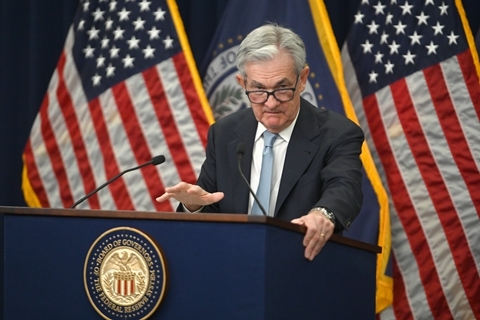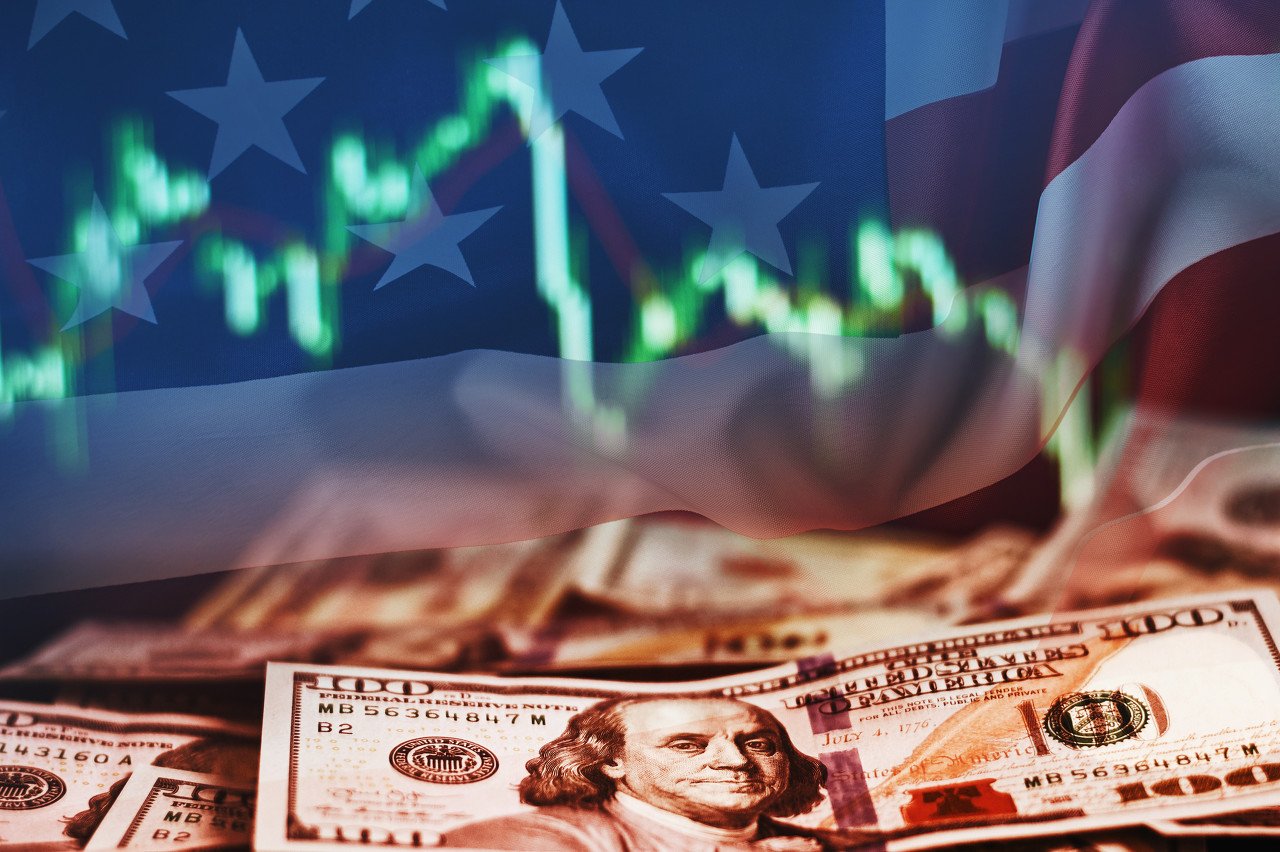
The Mysterious Call of Tibet: VERTU IRONFLIP Takes You to the Big Picture of Your Heart
In the ancient and mysterious land of Tibet, where the sacredness and serenity of nature can be felt with every
The Federal Reserve has sent an important signal!
At 2:00 am on April 13, Beijing time, the Federal Reserve released the minutes of its March meeting. Under the banking crisis, many officials have revised down their expectations for the peak interest rate, predicting that the economy will experience a mild recession within the year.
Despite the increased possibility of a recession, Federal Reserve officials still hinted that there may be a further interest rate hike at the next meeting in May.
Nick Timiraos, a reporter for the Wall Street Journal who is considered the “mouthpiece” of the Federal Reserve and is known as the “new Fed mouthpiece,” pointed out that although the likelihood of the United States falling into a recession later this year is relatively high, stubbornly high inflation and a tight labor market have forced Federal Reserve officials to signal that there may be a further interest rate hike in May.
Affected by concerns about the recession, U.S. stocks experienced a noticeable dip during the trading session. The U.S. stocks, which opened higher, turned down at the end of the day and closed at their daily low, with the Dow Jones Industrial Average ending its four-day winning streak and the Nasdaq Composite Index falling by more than 100 points.
The market generally expects that, if there are no surprises, May will be the last interest rate hike by the Federal Reserve, and the market is increasing its bets on a rate cut before the end of the year, with the expectation that the benchmark interest rate will be 50 basis points lower than the current level.

The minutes stated: Considering the recent developments in the banking industry that may impact the economy, the staff’s expectations at the March meeting included a mild recession starting later this year, followed by a recovery over the next two years.
Caixin noticed that the word “recession” was only mentioned three times in this set of minutes. In addition to the mild recession forecasted above, it appeared twice more when the staff warned of the risks to the baseline forecast.
The staff believes that their baseline forecast faces far more uncertainty than before.
The minutes specifically mentioned:
The staff believes that the risks associated with the baseline forecast mainly depend on the condition of the banks and their impact on the financial environment. If the recent developments in the banking industry quickly diminish their impact on the macroeconomic situation, then the baseline forecasts for economic activity and inflation will tend to have an upward risk. If the banking industry and the financial environment, and their impact on the macroeconomic situation, deteriorate more than the baseline assumptions, the baseline forecasts for economic activity and inflation will tend to have a downward risk, especially because historically, recessions related to financial market problems tend to be more severe and longer-lasting than ordinary recessions.
Despite the increased possibility of an economic recession, Federal Reserve officials still hinted that there may be further interest rate hikes at the next meeting in May. The minutes stated that, given the recent changes in the situation, the members of the Federal Open Market Committee (FOMC) of the Federal Reserve expected that it might be appropriate to add some policy tightening in order to achieve a sufficiently restrictive policy stance for the economy, allowing the inflation rate to gradually fall back to 2% over time.
In terms of inflation, the staff forecasted a PCE price inflation of 2.8% for this year and a core PCE inflation of 3.5%.

U.S. stock futures rose rapidly before the market opened due to the continuous slowdown and underperformance of nominal CPI inflation. The major indices opened collectively higher, with the Dow Jones Industrial Average (Dow) once rising by nearly 210 points.
However, core inflation remained high, and the NASDAQ turned negative 90 minutes after the opening. Before noon, U.S. stocks turned negative across the board, with the S&P 500 index erasing a 0.6% gain and falling below the 4,100 mark. Before the downturn, the Russell Small Cap index led with a nearly 1% increase and broke through the 1,800 mark.
Before the release of the Federal Reserve’s meeting minutes, U.S. stocks turned slightly positive again. However, after the release, concerns about a recession increased, and U.S. stocks turned negative again, with the decline widening, and the market closed at its daily low.

As of the close, the S&P 500 index nearly erased the gains made since last Wednesday. The Dow Jones Industrial Average ended its four-day winning streak and failed to maintain its new high for over seven weeks. Both the Nasdaq Composite and the Nasdaq 100 fell for three consecutive days, hitting a two-week low since March 29th.
The market generally believes that after assessing the economic environment, the Federal Reserve will raise interest rates by 25 basis points for the last time at the interest rate meeting on May 3rd. This means that the Federal Reserve is sending an important signal to central banks around the world, indicating that this round of aggressive tightening cycle is about to reach an inflection point.
After the release of the U.S. CPI report in March, Jan Hatzius, the chief economist of Goldman Sachs, predicted that the Federal Reserve will not raise interest rates in June, but still expects the Federal Reserve to continue raising interest rates by 25 basis points in May, bringing the federal funds rate to a range of 5-5.25%. Previously, Goldman Sachs expected the Federal Reserve to raise interest rates in June as well.
The financial blog Zerohedge commented that since most other Wall Street banks have followed Goldman Sachs’ view, it is expected that May will be the end of this round of interest rate hikes, which will become a consensus within 24 hours.
On Tuesday, the first Federal Reserve official supporting not raising interest rates in May appeared. Charles L. Evans, the president of the Federal Reserve Bank of Chicago, stated that under the banking crisis, it is necessary to act cautiously. The financial tightening caused by the banking crisis may be equivalent to an interest rate hike of 25 to 75 basis points, which can help to quell inflation and reduce the work that monetary policy needs to do.
However, on Wednesday, Mary C. Daly, the president of the Federal Reserve Bank of San Francisco, who is traditionally considered a dove, stated that there are ample reasons to believe that the Federal Reserve still needs to take further tightening measures. However, she also mentioned that there are many signs indicating that even if the Federal Reserve does not continue to raise interest rates, economic growth will slow down, and the impact of the interest rate hike will take some time to fully manifest.
From the perspective of the market, after the release of the U.S. CPI data, traders have increased their bets on the Federal Reserve cutting interest rates before the end of the year, while lowering their expectations for an interest rate hike in May, from the previous 76% to 67%.

The most accurate Wall Street forecaster last year, Bank of America strategist Michael Hartnett, believes that investors are now too focused on the peak interest rates and the timing of the Fed’s potential rate cuts, while underestimating the risk of an impending recession and its impact on the stock market.
In a recent report, Hartnett’s team suggested that investors should sell U.S. stocks when the Fed’s last rate hike occurs or when the Fed’s rate hikes are nearing an end, rather than after the rate hikes have ended.
The team believes this conclusion is based on the experience of the 1970s and 1980s, during which every three months after the end of the rate hike cycle, U.S. stocks fell.